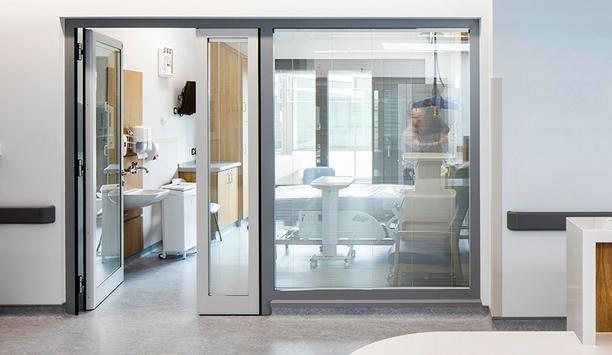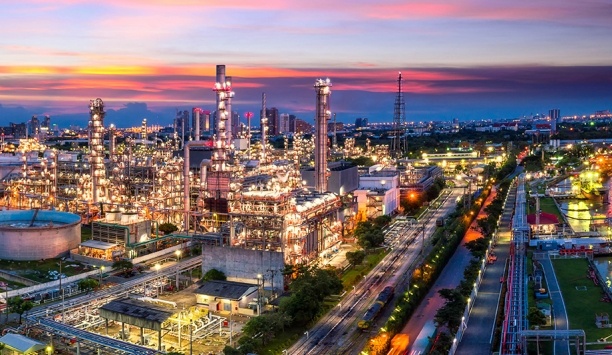Industrial Fire Safety - Expert Commentary
Innovation in the fire protection industry can oftentimes be slow to move forward, particularly when compared to other similar industries. This is because legislation, regulation, and enforcement, while all necessary proponents within the sector, can often slow the tide of revolutionary ideas. However, the ability to innovate in this industry can quite literally be a matter of life and death. The developing intricacies of modern infrastructure and the demand for more sustainable solutions must...
It is well reported that incident numbers attended by the UK Fire and Rescue Services have reduced over the last decade, partially as a result of the improved fire safety education conducted by dedicated teams in community fire safety, and other related activities. In particular, during the period 2008-2018, there was a 20% reduction in total fire calls. However, in 2019, there was a small annual rise in the number of fires attended, and in particular, secondary fires. (Home Office, 2020). As a...
With Grenfell inquiries continuing to uncover a number of fire safety issues, it’s clear that decision makers must learn from critical mistakes in a bid for better fire safety standards. Karen Trigg of Allegion UK highlights the key lessons that must be taken from Grenfell to help ensure a disaster of this magnitude never happens again. On the 14th June 2017, UK witnessed a tragedy. A myriad of critical issues, whether the result of mistakes, oversights or neglect, led to the largest fire...
There are many daily risks faced by buildings and their managers, with electrical fires being one of the most common and dangerous. Commercial fires impact occupant health, property and the business itself – with 25% of businesses who suffer a fire never reopening. Given the often-unpredictable nature of electrical fires, businesses must invest in the latest technologies to prevent irreparable damage. It is the responsibility of the consultant engineer to show le...
Due to the nature of their design and uses, tunnels have particularly unique fire risks, and any fire can spread quickly, risking damage to assets or injuries to teams. Mining, cable and communication tunnels are subject to significantly high risks, as they utilize heavy-duty machinery, flammable materials and cables, which are all subject to the production of excess heat. Here we discuss the prevalent fire risks in tunnels and explain how businesses operating within them can assess and mitigat...
As the demand for power increases in the UK across growing domestic and industrial markets including the nuclear industry, so the need for reliable power generation, transmission, and distribution using Medium Voltage cables has risen with it. The demands for power has never been greater, with the explosion of development in towns and cities across the UK and the growth of industrial development and technology reliant on consistent supplies. Medium voltage cables As the incidence of non-...
Last year saw a 14 per cent increase in fires in England, according to UK Home Office statistics. And while around three million fire doors are installed in the UK every year, a lack of understanding during operation, maintenance and management of fire doors is still apparent. In this article, David Hindle, Head of Door Closer Sales at ASSA ABLOY Opening Solutions UK & Ireland, will address this issue. Importance of fire doors Fire doors are often the first line of defense in a fire, yet e...
During these challenging times, it is more important than ever to protect the supply chain of food, including supermarkets and convenience stores in cities around the world. On average 3,740 fires occur in food and groceries stores in the US annually, including supermarkets and convenience stores, according to a report published by the NFPA (National Fire Protection Association). Structure fires in mercantile properties were responsible for the loss of 12 lives and more than $600 million indir...
With many businesses and facilities re-opening sites following the Coronavirus lockdown, fire safety may not seem high on the list to other worries and responsibilities. But here, Mandy Bowden, Fire Business Development Manager at Comelit Group UK, led by fire industry bodies, demonstrates why it must be a priority, ensuring installation of systems is guided by best practice in accordance with the development, and fire safety measures are maintained and regularly tested to ensure compliance. Fi...
New government legislation due to come into force in the United Kingdom on July 1st will require electrical installations in privately rented properties to be tested and inspected at least once every 5 years. The Electrical Safety Standards in the Private Rented Sector Regulations (2020) will require landlords to enlist qualified electricians to complete inspections and provide certification to tenants – or face fines of up to £30,000. While the risk of fire can never be entire...
There have been challenges with completing fire safety maintenance and installation projects during the current Covid-19 crisis, most notably as a result of the difficulties for installers in safely accessing sites. Many construction projects halted for lockdown and this resulted in approximately 50% of the British installers we work with having to furlough staff. The challenges, however, are not just restricted to the UK. With Kentec panels sold in more than 90 countries across the world, we ha...
Those responsible for the specification of products which go into new modern buildings have been asking for safe, approved cabling, which play a critical part in electrical supply systems. The number of fires in high-rise buildings in Europe and the Middle East have brought the issue of quality of products for fire performance circuits into sharp focus, not least the Grenfell disaster. Meanwhile, new buildings become increasingly complex, with the use of new materials and the designs of many r...
The original fire suppression agent has always been, of course, water. In the age of sail, it was ideal. Not so with the advent of the combustion engine, however. When applied to burning petroleum, the fire spreads. It also simply destroys electronics. Carbon dioxide (CO2) and Halon derivatives were the first widely used commercial fire suppression solutions, gaining popularity in the 1950s and '60s. Unlike water, they were highly effective, electrically non-conductive and didn't leave any resi...
While whole room protection – sprinklers or gas systems – is a common choice, there is an argument for thinking smaller; taking fire detection and suppression down to the equipment, enclosures and even the components where a fire is most likely to start. Traditional Fire Suppression Methods A traditional water-based sprinkler system is the most common form of fire protection found in commercial and industrial buildings. They offer reasonable cost, large area protection for entire f...
Within traditional commercial and industrial firefighting systems, engineers have primarily focused on permanent installation designs rather than entertaining alternative or supplemental mobile firefighting systems. Permanent installation design is typically better understood, supported, and supplied throughout the fire protection engineering and manufacturing community. However, mobile firefighting systems provide unique solutions and advantages compared to their permanent installation cousins...
The New Future For Fire Agencies
DownloadThe Eight Key Trends in Fire Detection in 2023
DownloadA Digital Platform to Improve Fire Safety Compliance and Inspections
DownloadOvercoming the Challenges of Fire Safety in the Paper Industry
DownloadCarbon Monoxide: Creeping Killer Caught In The Act
Download


















